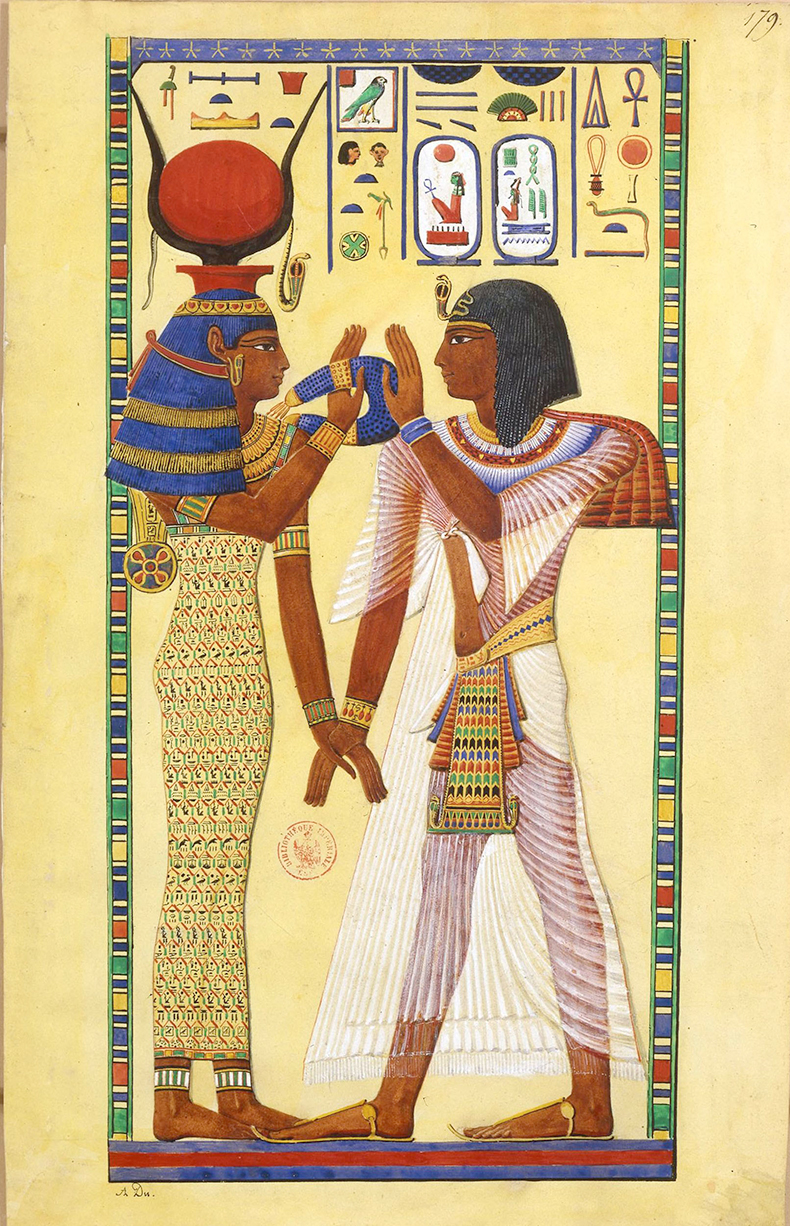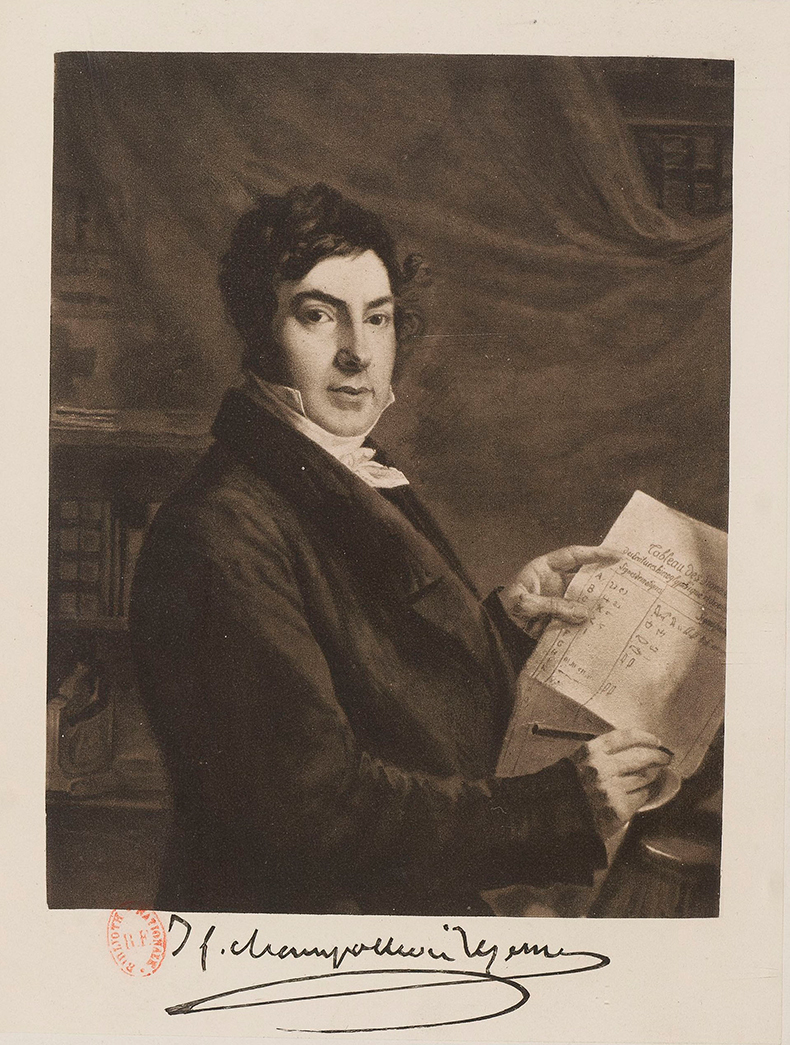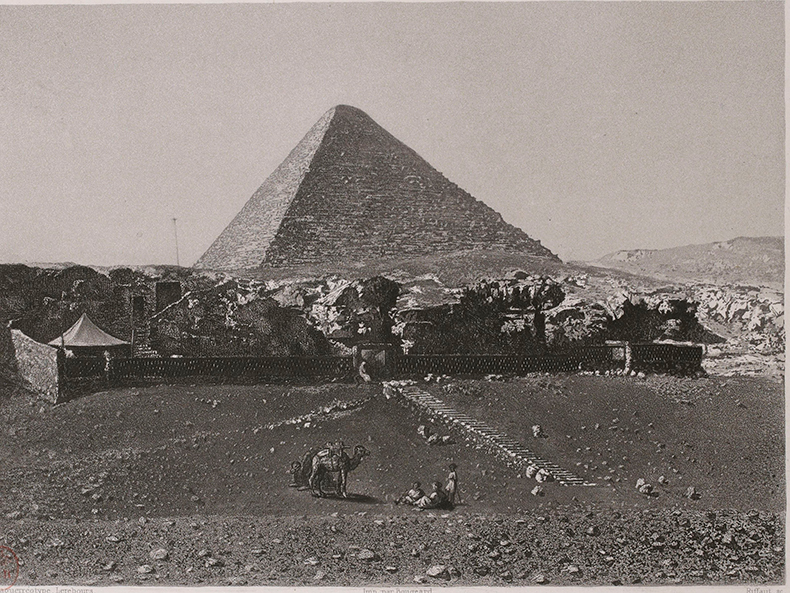This exhibition at the Bibliothèque Nationale de France in Paris (12 April–24 July) celebrates two hundred years since Jean-François Champollion succeeded in deciphering the hieroglyphics on the Rosetta Stone; nearly 350 manuscripts, sculptures, papyrus scrolls and other artefacts are on display, from the BnF’s collections as well as external loans. The show elucidates Champollion’s field-work methods, while also considering the obstacles he faced not only in cracking the enigma of hieroglyphs that had stumped so many before him, but also in disseminating his discoveries. On display is Champollion’s notebook, which contains his hand-drawn illustrations of the hieroglyphs and attempts at translation. Find out more on the Bibliothéque Nationale de France website.
Preview below | View Apollo’s Art Diary here

Copy of the three inscriptions found on the Rosetta Stone (1799). Photo: © BnF, Paris; courtesy BnF Department of Manuscripts

Monuments of Egypt and Nubia. Seti I and Hathor (c. 1835–45). Photo: © BnF, Paris; courtesy Bnf Department of Manuscripts

Engraving of the portrait of Jean-Francois Champollion from Champollion: the Life and Work (1906) by Hermine Hartleben. Photo: © BnF, Paris

Excursions Daguerriennes. Vues et monuments les plus remarquables du globe (c. 1840-43), Noël-Marie Lerebours. Photo: © BnF, Paris; courtesy BnF Department of Prints and Photography














![Masterpiece [Re]discovery 2022. Photo: Ben Fisher Photography, courtesy of Masterpiece London](http://zephr.apollo-magazine.com/wp-content/uploads/2022/07/MPL2022_4263.jpg)
Suzanne Valadon’s shifting gaze